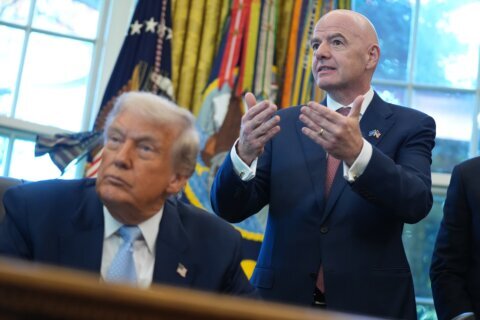Lacey Mason, wtop.com
WASHINGTON – Life is expensive.
There are the bills we expect every month: Rent, phone, car insurance, student loans. Then there are the ongoing expenses we don’t think about until we need them: Toiletries, gasoline, haircuts, etc.
Not only do we need to budget for major expenses, we also need to remember the little ones, with a larger goal of being able to predict them. And if you’re as scatterbrained as I am, Mint may be able to help.
The completely free financial planning software offers a way to combine financial accounts in one place to make monitoring easier. Users also set up budgets in various categories so they can see where every dollar goes, and learn how to say “no” when they simply don’t have the cash.
How advanced is the planning software?
I connected my checking, savings, credit card, student loan and 401K accounts. Despite being with different banks, they’re all instantly and continuously monitored by the software, and if anything strange comes up (like a late fee), you’re notified via email.
If you choose, Mint will even notify you when your student loan or credit card payment is due.
After accounts are added, it’s time to start a budget. If you’ve never budgeted before, it will take some time to figure out where your money actually goes compared with where you thought it went.
Honesty is key to the budget: Don’t lie to yourself. If you know you’re going to spend money on something, budget for it.
For example, smokers should budget for cigarettes. If you know you’re going clothes shopping, give yourself that leniency. Some of my odd but honest categories are hair care, clothing and pets.
After you’ve set your budgets, the program will assess where you are. Each purchase is automatically categorized and can be adjusted if the program gets it wrong.
Mint also uses visual elements to help monitor your spending habits. If you’ve budgeted $300 for a month of gas but only spent $250, a green bar will display on the screen with a gap for the extra $50 saved.
When you’ve spent the exact amount budgeted – your monthly mortgage payment, for example – you’ll get a yellow bar: Stay right way you are. And if you overspend, you guessed it: a red bar.
Mint also offers a “goals” section, which lets you choose a savings goal, how much it will cost and by when you want to have the money saved. This is a good place to plan for vacations, new cars or an emergency fund.
Finally, and perhaps the most telling category, is “trends.” This section compares your spending categories with each other to give you a visual idea of where your money goes. My favorite is the color-coded pie chart, which informed me in the very lovely shades of “pumpkin,” “peach” and “teal” that my money for September went to education expenses, shopping and bills.
If you hover over each section of the chart, you can take a closer look at the spending breakdown. For example, while my September pie chart says I spent $459 on shopping, most of that went to the purchase of a new phone – an item for which I’d already budgeted.
Additionally, this chart only shows spending – it doesn’t account for all income.
For money management on the go, Mint has an app for iPhone and Android devices.
Now, since Mint is completely free, users will encounter ads – usually for other financial institutions. But when you’re working on financial planning, it’s hard to argue with free.
Watch the video below for more information, or visit Mint.com.
Follow Lacey Mason and WTOP on Twitter.
(Copyright 2012 by WTOP. All Rights Reserved.)







